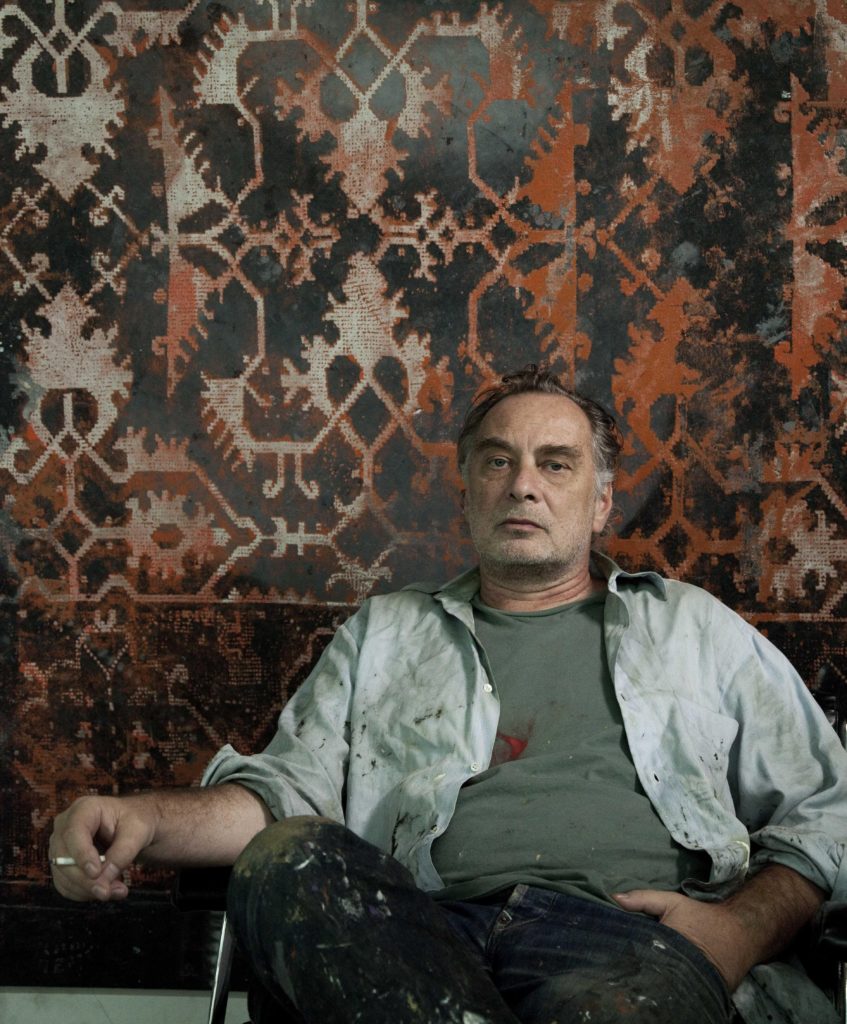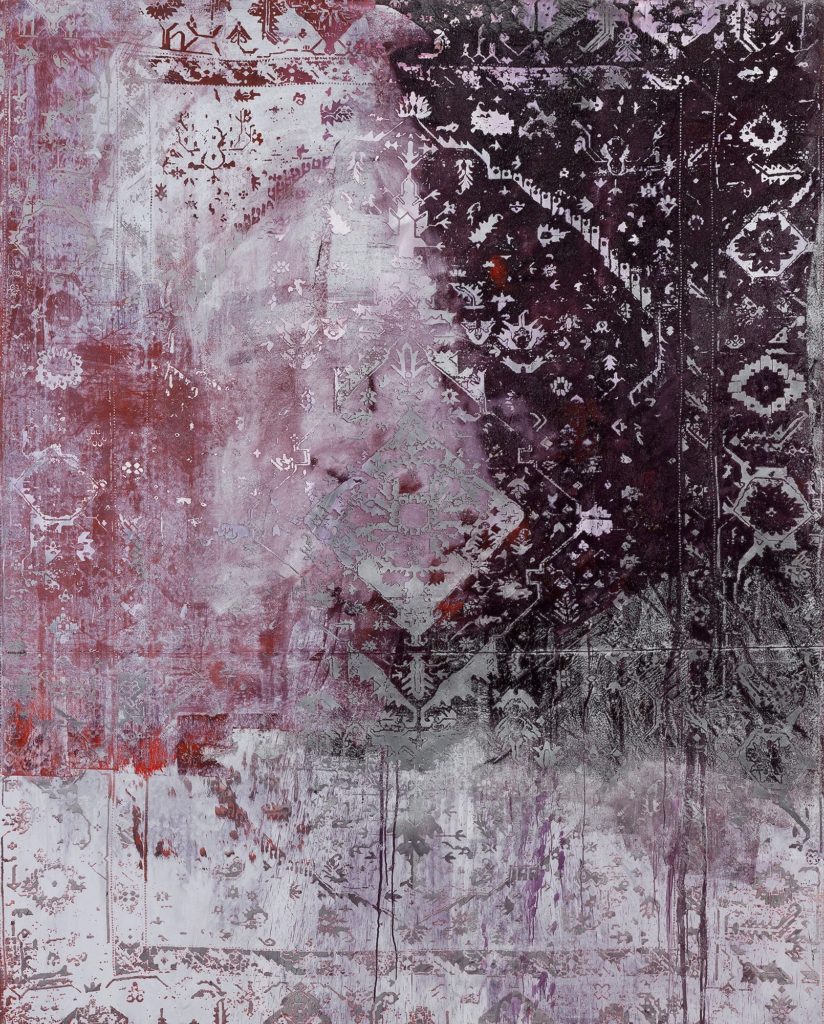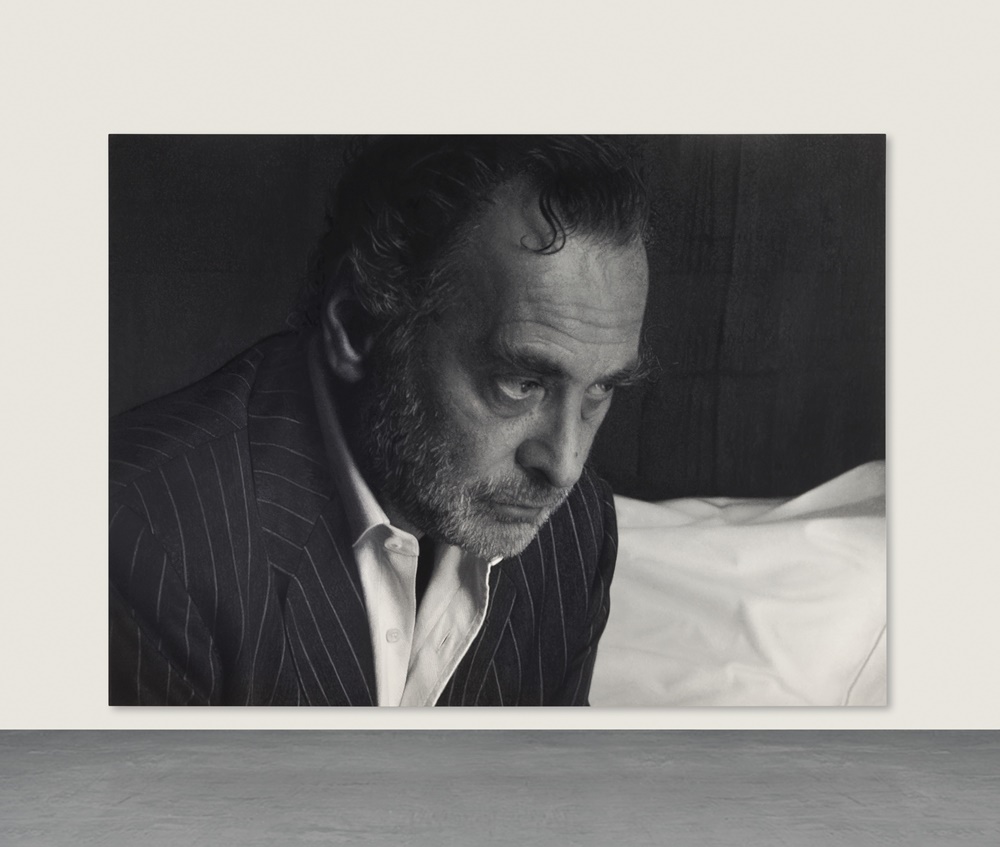Analysis
Artist Rudolf Stingel Is the Toast of Basel. And After a Spotty Year, His Market Is Poised for Liftoff Yet Again
The artist is the subject of a major new show at the Beyeler Foundation in Basel.

The artist is the subject of a major new show at the Beyeler Foundation in Basel.

Eileen Kinsella

Audiences and collectors have had a decades-long love affair with the conceptual work of Italian-born, New York-based artist Rudolf Stingel. The reasons for that fascination are on full display in the Swiss city of Basel, where one of the highlights of this week’s Art Basel festivities is a major Stingel survey at the Beyeler Foundation.
The show, which features numerous new and never-before-shown works, is the result of a close collaboration between the artist and guest curator Udo Kittelmann, who told artnet News that “Stingel negotiates the state of painting like no other artist in current times.”
But Stingel, along with his dealers, has also proven very successful at negotiating the state of the artist’s market. By the end of the VIP preview day at Art Basel, Stingel’s Italian gallery, Massimo De Carlo, had sold an untitled 2019 oil painting for $2.2 million. De Carlo says prices for Stingel’s primary market sales range from about $1 million to $7 million, depending on size. Collectors show a particular preference for his abstract and monochrome works from the 1980s and ’90s.
Stingel’s auction sales have yielded even higher results, including his current record of $10.6 million, though recently there has been some volatility in this realm. The record was set at Christie’s New York in May 2017 for Untitled (After Sam) (2006), a photorealist self-portrait. The second-highest price of $7.9 million was achieved at Phillips London in March 2018 for an untitled electroformed copper work from 2012. Stingel’s work first appeared on the auction market in 1997, and the first time a work broke $1 million at auction was 2007, the same year as his much-lauded Whitney Museum mid-career survey.

Rudolf Stingel, Untitled (2013). ©Rudolf Stingel. Photo: Christopher Burke Studio. Courtesy of Fondation Beyeler.
So what’s behind Stingel’s longstanding dominance of both markets and museums?
The artist first came onto the New York art scene in the 1980s and, a few years later, turned heads with his Instructions (1989), a limited-edition manual that explained step-by-step, and in several languages, how to make one of his silver paintings. He also began incorporating unconventional materials, such as folded and creased tulle, into his screenprint compositions before covering over them with silver spray paint.

Rudolf Stingel, Installation views Massimo De Carlo, Milano/Belgioioso, (2016). Photo by Roberto Marossi. Courtesy Massimo De Carlo, Milan/London/Hong Kong.
“He’s arguably an artist who has forcibly redefined how one makes and looks at painting, and what constitutes a painting,” says Steven Henry, a senior director at Paula Cooper Gallery, which has worked with the artist since the early 1990s. In addition to De Carlo and Cooper, Stingel is also represented by Sadie Coles in London and Gagosian.
It also helps that the end results of Stingel’s conceptual explorations happen to be visually stunning. In 1991, Stingel installed a bright orange carpet for an exhibition at the former Daniel Newburg Gallery in SoHo in New York, activating the space in a new way.
“He has always been making works which are very beautiful with respect to the colors, images, and textures, but they’re also accompanied by deep conceptual ideas” linked to art history, says Alessandro Diotallevi, a postwar and contemporary art specialist at Christie’s.

Rudolf Stingel, Untitled (2013). ©Rudolf Stingel. Photo: Alessandro Zambianchi. Courtesy of Fondation Beyeler.
Later series have seen Stingel indulging his longstanding fascination with patterns and repetition, as well as experimenting with materials like styrofoam and electroformed copper, to create canvases.
“Notwithstanding their material disparities, all of Stingel’s works share the presence of random or deliberate painterly traces,” Kittelmann says. “Time and chance, change and destruction appear on their surface. Stingel’s oeuvre thereby poses fundamental questions regarding the understanding and the perception of art as well as memory and the transience of things.”

Rudolf Stingel, Untitled (After Sam) (2006), sold for a record $10.6 million at Christie’s in 2017. Image courtesy of Christie’s Images Ltd.
But despite the legions of supporters of Stingel’s work, his market has seen significant blips too. Diotallevi points out that the fact that the artist’s top five auction prices were achieved in the past three years “shows how very strong the demand for his works at auction is.” However, a chronological analysis by the artnet Price Database shows a leveling off of auction totals between 2018 and the year to date in 2019.
Of 35 works offered at auction since the start of 2018, eight, or 22 percent, were bought in. Roughly the same number of works (34 lots) were offered in 2017, the year the artist’s record was set. Four went unsold, while one was withdrawn.
“His market is very strong, but it’s natural,” says De Carlo. “It’s not artificial because of a couple of auction results.”
“If you look broadly at the Stingel market there has been overall steady growth from the first million-dollar picture in 2007,” says Henry Highley, a specialist at Phillips London. “You can’t have exponential growth at all times and there has been a few points where it’s plateaued a bit, which is healthy.” Highley adds that the overall Stingel market is “well managed while never having been overly hyped.”
The auction market for Stingel will get a key litmus test in London later this month. Phillips is selling a photorealist self-portrait, Untitled (After Sam) (2007), on June 27 with an estimate of £1.2 million to £1.8 million ($1.5–2.2 million). And Sotheby’s London is offering a magenta-colored pattern painting from 2012 for the same estimate at its upcoming contemporary evening art auction on June 26.
“Rudolf Stingel” is at the Beyeler Foundation in Basel, Switzerland, through October 6, 2019.